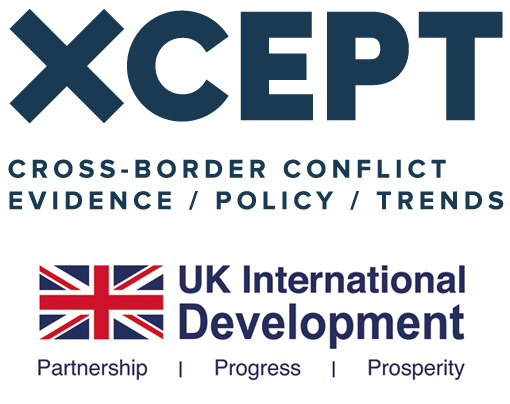Despite its recent announcement that it would reduce its military forces in Yemen, the United Arab Emirates (UAE) will remain the most powerful actor in the south of the country. The redeployment will allow the UAE to focus on its own interests by relying more heavily on local actors with whom it is aligned.
Emirati officials have stressed that the UAE is not withdrawing from Yemen. Rather it is drawing down its troop numbers and redeploying its forces to focus on counterterrorism. While these officials have said that this “was not a last-minute decision” and was discussed extensively with Riyadh, the redeployment has underlined disagreements between the UAE and Saudi Arabia over Yemen.
Saudi royal officials have reportedly intervened personally to discourage the Emiratis from going through with their decision. However, the UAE appears to have decided to free itself from the restrictions of the alliance. Since the beginning of military operations in March 2015 by Arab coalition forces, the Emirati and Saudi strategies have differed. The primary Saudi aim was to weaken the Houthis in order to restore to office the internationally recognized head of state, President ‘Abed Rabbo Mansour Hadi, expand Riyadh’s influence, and improve security along the Saudi-Yemeni border.
The Emiratis, in turn, have sought to gain influence in Yemen’s coastal areas and in the south of the country, in such a way as to strengthen their presence along shipping lanes in the Gulf of Aden and the Mandeb Strait, toward the Horn of Africa. The growing rifts between Saudi Arabia and the UAE have led both countries to reinforce their presence in politically divided governorates not under Houthi control, where they have allied themselves with Yemeni factions and used them to further their respective aims.
Today, the UAE’s drawdown offers several advantages. It allows the Emirates freedom of maneuver to pursue its political objectives in Yemen, using local proxy forces. It also buys the UAE a margin of maneuver with regard to the Houthis and Iran. And it distances the UAE from the worst consequences of what is taking place on the ground in Yemen, while reducing casualties among Emirati forces, with the concomitant domestic benefits that this offers.
From the official perspective of UAE leaders, the war in Yemen ended some time ago. The crown prince of Abu Dhabi, Mohammed bin Zayed (effectively the man running the UAE’s foreign policy given the ill health of his brother, UAE President Khalifa bin Zayed) made this clear in a tweet in June 2016. “Our standpoint today is clear: war is over for our troops; we’re monitoring political arrangements, empowering Yemenis in liberated areas,” he tweeted.
The UAE has mainly sought to influence events in southern Yemen to undermine the Hadi-led government and prevent it from opposing UAE aims in the region. The Emiratis support one of the key southern separatist movements, the Southern Transitional Council (STC), backing its demands for the independence of southern Yemen. Moreover, after former Yemeni president ‘Ali ‘Abdullah Saleh was killed by the Houthis in December 2017, the UAE assisted his nephew Tareq Saleh in establishing military units on Yemen’s western coast. The STC and Tariq’s forces are officially fighting the Houthis, but refuse to recognize Hadi’s legitimacy. The UAE has trained some 90,000 troops, whose salaries it also pays, providing it with an effective ground force as a means of military and political leverage.
Recently, the UAE unified all military forces in western Yemen, including those in the port city of Hodeidah, under Tareq Saleh. It apparently sought greater control over forces in the area to prevent any military escalation. Indeed, a source close to the Houthis noted that the Houthis and the UAE had reached an understanding to avoid any intensification of the fighting in western Yemen, otherwise the Houthis would target the UAE’s ports and airports in the same way that they have Saudi Arabia’s. Until now the UAE has not been attacked by the Houthis, even as pro-Houthi sources have alleged that the group has developed unmanned aerial vehicles with a range of 2,000 kilometers, putting the UAE within range.
The UAE’s behavior in western Yemen underlines that it is primarily focused on southern Yemen and the coast, with little interest in what happens in the country’s north. Given that the Houthis, in turn, have no strategic interest in southern Yemen, this has created room for the Houthis and Emiratis to find compromises. For the UAE, it no longer makes sense to involve itself in fighting over areas it regards as marginal to broader Emirati interests.
Emirati pragmatism has also been visible in the growing crisis between the United States and Iran. The UAE has been careful to avoid any escalation with Tehran. This was particularly visible when Iran or pro-Iran groups targeted four oil tankers near Fujairah last May. While the UAE and others later concluded that a “state actor” had likely been behind the attacks, the UAE was careful not to accuse Iran directly of having done so.
The drawdown of forces will also serve another purpose. It may improve the UAE’s image at a time when international humanitarian organizations have accused it of perpetrating human rights violations in Yemen. The international outcry over the humanitarian situation is rising, with even the U.S. Congress seeking to block arms sales to the Gulf nations. Therefore, the UAE is almost certainly calculating that by reducing its presence on the ground, it will be held less accountable for the catastrophe that Yemen has become.
The headline was changed, as it unintentionally repeated one used earlier this year. Two corrections were also made. Mohammed bin Zayed is the brother of Khalifa bin Zayed, not his son. And Tareq Saleh is the nephew of ‘Ali ‘Abdullah Saleh, not his cousin.









